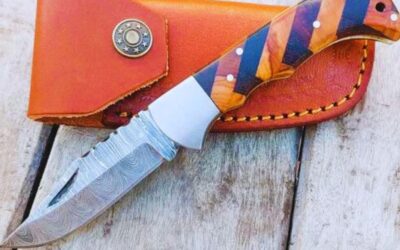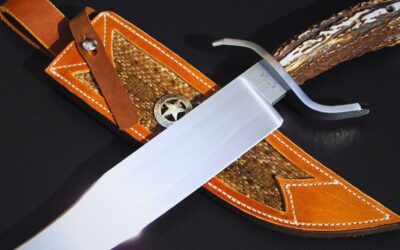Introduction
Keeping your knives sharp is crucial for both efficiency in the kitchen and safety. But how much does knife sharpening cost? This article will break down the various factors that influence the cost, the different methods available, and how to get the best value for your money.
Factors Influencing Knife Sharpening Costs
Type of Knife
The type of knife you have plays a significant role in the sharpening cost. For instance, kitchen knives, hunting knives, pocket knives, and specialty knives each have unique sharpening requirements and associated costs.
Sharpening Method
The method you choose to sharpen your knife—manual, electric, or professional service—will also affect the cost. Each method has its own set of tools and expertise levels, influencing the overall expense.
Professional Services vs. DIY
Deciding between doing it yourself or hiring a professional is another key factor. While DIY methods might seem cheaper initially, the long-term costs and quality of sharpening can vary significantly.
Geographic Location
Where you live can impact the cost of knife sharpening services. Urban areas might have higher prices due to higher operational costs, while rural areas could offer more affordable options.
Frequency of Sharpening
How often you sharpen your knives affects the total cost over time. Regular maintenance can prevent the need for more expensive repairs or replacements in the future.
Types of Knives and Their Sharpening Needs
Kitchen Knives
These are the most commonly sharpened knives. Regular use in food preparation dulls the blades, requiring frequent sharpening.
Hunting Knives
Used for outdoor activities, hunting knives often encounter tough materials that dull the blade quickly, necessitating frequent sharpening.
Pocket Knives
While not used as intensively as kitchen or hunting knives, pocket knives still require periodic sharpening to maintain their functionality.
Specialty Knives
These knives, such as filleting or carving knives, require specialized sharpening techniques, often resulting in higher costs.
Sharpening Methods
Manual Sharpening
Manual sharpening involves using stones or rods to hone the blade by hand. It’s a traditional method that can be cost-effective if you have the right skills and tools.
Electric Sharpeners
Electric sharpeners offer convenience and speed. They are easy to use but come with a higher initial investment compared to manual tools.
Professional Sharpening Services
Professional services provide expert sharpening and can handle a variety of knives. While more expensive than DIY methods, they offer the best results and save you time.
Cost Breakdown for Each Sharpening Method
Manual Sharpening Costs
The cost of manual sharpening primarily includes the price of sharpening stones or rods, which can range from $20 to $100 depending on quality.
Electric Sharpener Costs
Electric sharpeners range from $50 to $200. While the upfront cost is higher, they provide quick and efficient sharpening.
Professional Service Costs
Professional sharpening services normally charge between $5 to $10 per blade. Some services offer packages or discounts for multiple knives.
DIY Knife Sharpening
Tools Needed
For DIY sharpening, you’ll need sharpening stones, honing rods, or even a manual sharpener. Each tool has its own cost and effectiveness.
Cost of Tools
Sharpening stones can cost between $20 and $100. Honing rods are usually cheaper, ranging from $10 to $50. Manual sharpeners can cost around $15 to $60.
Time and Effort Required
Sharpening knives manually requires practice and patience. The time and effort involved can be a downside for some people.
Professional Knife Sharpening Services
How to Find a Good Service
Look for reviews and recommendations to find a reliable knife sharpening service. Local culinary stores or knife shops often offer these services.
Average Costs
Professional services usually charge by the inch or by the knife. Prices typically range from $5 to $10 per knife, with some variation based on the knife type and condition.
Pros and Cons
While professional services offer expert results and save time, they can be more expensive, especially if you have many knives.
Comparing Costs: DIY vs. Professional Services
Initial Investment
DIY methods require an initial investment in tools, while professional services have a pay-per-use cost structure.
Long-term Costs
Over time, DIY sharpening can be more cost-effective if you frequently sharpen your knives. Professional services, however, offer consistent quality without the need for personal skill development.
Value for Money
Professional services provide high-quality results and convenience, which can justify the higher cost for many users.
Geographic Variations in Sharpening Costs
Cost Differences by Region
Knife sharpening costs can vary significantly by region. Urban areas tend to have higher prices due to higher overhead costs.
Urban vs. Rural Pricing
Rural areas often have lower prices for knife sharpening services, but the availability of professional services might be limited.
Frequency of Sharpening and Its Impact on Cost
How Often to Sharpen Knives
Most kitchen knives need sharpening every few months, depending on usage. Hunting and specialty knives might require more frequent sharpening.
Cost Implications of Frequent Sharpening
Regular sharpening maintains the knife’s edge and can reduce the need for more extensive repairs, potentially lowering long-term costs.
Additional Costs to Consider
Shipping Fees (for mail-in services)
If you use a mail-in service, consider the cost of shipping, which can add to the overall expense.
Specialty Knife Charges
Some services charge extra for specialty knives, such as serrated or ceramic blades, due to the additional effort required.
Tips for Reducing Knife Sharpening Costs
Maintaining Knives Properly
Proper maintenance, such as regular honing and careful use, can extend the time between sharpenings, reducing costs.
Choosing the Right Sharpening Method
Selecting the right method based on your needs and budget can help manage costs effectively.
Using Discount Services
Look for discounts or package deals from professional sharpening services to save money.
Benefits of Regular Knife Sharpening
Improved Performance
Sharp knives make cutting tasks easier and more efficient, improving overall kitchen performance.
Increased Longevity of Knives
Regular sharpening extends the lifespan of your knives, providing better value over time.
Enhanced Safety
Sharp knives are safer to use than dull ones, as they require less force and are less likely to slip.
Conclusion
In conclusion, the cost of knife sharpening varies based on several factors, including the type of knife, sharpening method, and frequency of use. Whether you choose to sharpen your knives yourself or use a professional service, regular maintenance is essential for optimal performance and safety. By understanding the costs involved and exploring different options, you can make informed decisions that best suit your needs and budget.
FAQs
How often should I sharpen my knives?
Most kitchen knives should be sharpened every few months, depending on usage. Regular honing can extend the time between sharpenings.
Can I sharpen serrated knives?
Yes, but it requires special tools and techniques. It’s often best to have serrated knives sharpened by a professional.
Is it worth investing in an electric sharpener?
If you frequently sharpen knives and prefer convenience, an electric sharpener can be a worthwhile investment.
How do I know if my knife needs sharpening?
If your knife has difficulty cutting through food or feels dull, it’s time for sharpening.
What is the best way to maintain sharp knives?
Regular honing, proper storage, and careful use can help maintain the sharpness of your knives.




0 Comments